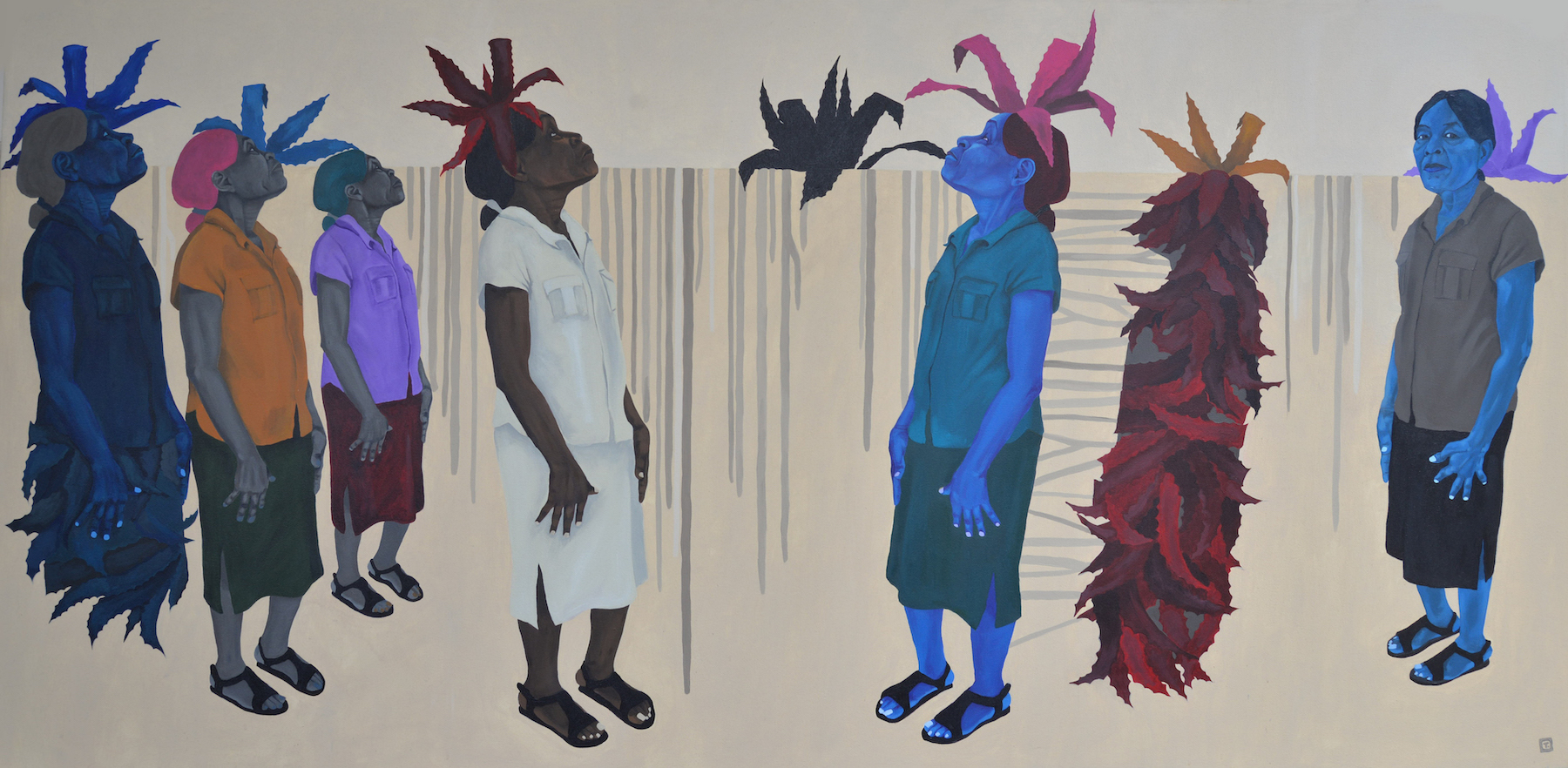
06.01.2020
Scholar Mamadou Badiane reevaluates Suzanne Césaire’s figure as a fundamental axis for the study on Antillean cultural identity. Rendered invisible by history, her radical ideas regarding racialization as an expanding process were eclipsed by a sociopolitical context that in her place accepted other voices.

Suzanne Césaire: The Unknown Mother of Antillanité

Massol Maïmé, Iwani, 2013. Collage; concepto, marco en cobre y latón, película fotográfica y cortes de revistas en monotipo

In addition to surrealism, her work touches on various aspects of the invisible wounds that impact the minds of Afro-Caribbean people, themes that reappear in the work of Frantz Fanon.

El régimen de Vichy (ciudad al centro de Francia) fue lo que resultó de la rendición de Francia a la Alemania Nazi en 1940, capítulo conocido como “La colaboración”, en el cual se estipuló que el territorio metropolitano sería dividido en dos partes: una parte ocupada por los alemanes y dirigida por el Mariscal Philippe Pétain, que incluía a París, y una parte “libre” que estaba al sur de la metrópolis. En el territorio ocupado se implementaron políticas anti-semitas, racistas y discriminatorias, que seguían los tres principios fundadores de la “Nación francesa”: trabajo, familia y patria en apoyo al Tercer Reich.
Lilyan Kesteloot, Les écrivains noirs de langue française: naissance d’une littérature, Bruselas: Université Libre de Bruxelles, Institut de Sociologie, 1965.
Suzanne Césaire, “Malaise d’une civilisation” en Tropiques, no. 3, París: Jean-Michel Place, 1978, p. 45.
Frances J. Santiago Torres, “Suzanne Césaire: un legado intelectual de Vanguardia” en Caribbean Studies, Vol. 41, no. 2 (julio – diciembre, 2013), p. 227–243.
Suzanne Césaire, “Le grand camouflage” en Tropiques, no. 13–14 (1945), París: Jean Michel Place, 1978, p. 267–73.
Kara Rabbitt, “The Geography of Identity in Suzanne Césaire’s Le grand camouflage” en Research in African Literatures, Vol. 39, no. 3 (Otoño, 2008), p. 121–131.
Miguel Arnedo-Gómez, Uniting Blacks in a Raceless Nation: Blackness, Afro-Cuban Culture, and Mestizaje in the Prose and Poetry of Nicolás Guillén, Lewisburg: Bucknell University Press, 2016.
Suzanne Césaire, “Malaise d’une civilisation” en Tropiques, no. 5 (1942), París: Jean-Michel Place, 1978, p. 43–49.
Ibid., p. 45.
Marie-Agnès Sourieau, “Suzanne Césaire et Tropiques: «de la poésie cannibale á une poétique créole»” en The French Review, vol. 68, no. 1, 1994, p. 69–78.
Kara Rabbitt, “In Search of the Missing Mother: Suzanne Césaire, Martiniquaise” en Research in African Literatures, vol. 44, no. 1, Primavera 2013, p. 37.
Mamadou Badiane, “Négritude, Antillanite et Créolité ou de l’é clatement de l’identitéfixe” en The French Review, vol. 85, no. 5, 2012, p. 837–847. Se puede ver que esta postura intransigente del padre de la Négritude se opone diametralmente a la de Suzanne Césaire, Edouard Glissant y de lxs miembrxs de la Créolite.
Traducido y publicado al inglés en EE.UU. en 1989.
Édouard Glissant, Le discours antillais, París: Seuil, 1981.
Nancy Morejón, Nación y mestizaje en Nicolás Guillén, La Habana: Ediciones Unión, 1982.
T. Denean Sharpley-Whiting, Negritude Women, Minneapolis: University of Minnesota Press, 2002.
Comments
There are no coments available.